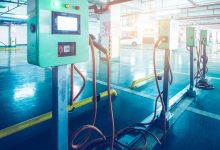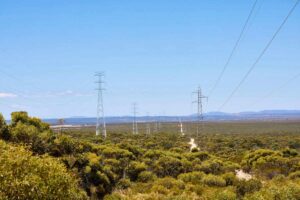The shift to electric vehicles is on an upward turn globally, and while statisticians may differ on what the predicted increase of EV adoption is likely to be, one thing is clear: more electric cars means more demand on the grid.
Recent analysis by McKinsey suggests that the resulting demand is not likely to be as, well – demanding, as suggested by other reports such as that of the International Energy Agency’s 2018 Global EV Outlook.
Regardless, there’s value for energy players and EV drivers alike in smoothing peak load.
McKinsey uses the case of Germany, citing a predicted increase of EV adoption to 40 per cent market penetration by 2050.
In contrast to that, figures show that the resulting demand on the grid overall by then would only be about 4 per cent – that is, an equivalent of roughly 20GW new capacity which would mostly be covered by renewable sources such as wind, solar.
Load and location
Still, localisation of EV demand presents its own challenges, and forecasts at postcode level by McKinsey suggest that certain areas will become EV hotspots resulting in local peak loads.
This is not immediately a concern – while one EV can double the load of a single home, McKinsey’s modelling over a sample of 150 homes suggests that even at 25% market penetration, the overall load increase for that local area is only 30%, an increase that should be easily absorbed by the local grid.
But this is because 75% of those homes are not charging EVs – so what happens when EV penetration of hotspots – or nationwide – hits a tipping point?
Fast and fluctuating
The question of how load curves are affected are exponential when considering fast-charging stations.
Following a fairly predictable yet highly fluctuating pattern from week to weekend, fast-charging stations have the potential to quickly exceed the peak-load capacity of local substations, McKinsey’s authors explain.
Bend it like you mean it
A kneejerk reaction by energy providers would be to increase infrastructure, at the cost of the consumer.
But is this necessary? Not at all.
On the supply side, energy players can encourage EV drivers to charge at times when demand on the grid is lower using incentives such as time-of-use tariffs.
McKinsey’s modelling shows that time-of-use tariffs have the potential to halve the electricity load – albeit still at a 25 per cent penetration of EVs locally, and with the risk of creating ‘timer spikes’ when many people set to charge their EVs simultaneously.
Taking advantage of dropping prices of batteries and introducing localised solutions such as pairing transformers with storage that charges at times of low load, then dispersing that charge on the local grid as needed is also cited as a possible solution.
Sticks and carrots
Solutions like these do have the potential to smooth a peak load profile, but offer little from the perspective of the EV driver.
At best, the consumer is required to do nothing – keep charging whenever and rely on the energy giant to make it work – or, at worst, be beaten with the stick of increased electricity bills.
Intelligent charging solutions like an EV charging program being trialled in Southern California by Honda and Enel X instead present a carrot approach.
By monitoring demand spikes via a smartphone, EV drivers can select low load times to charge and thereby contribute to smoothing peak load, with the additional bonus of a financial reward for doing so.
Combine this with solutions such as that being developed in Queensland by Ignite Ideas grant recipient Visional Technologies, whereby the power drawn from fast-chargers can be regulated according to demand, reducing charging times, and you have a system that has the potential to work for the consumer, the energy provider and grid – all in one go.










